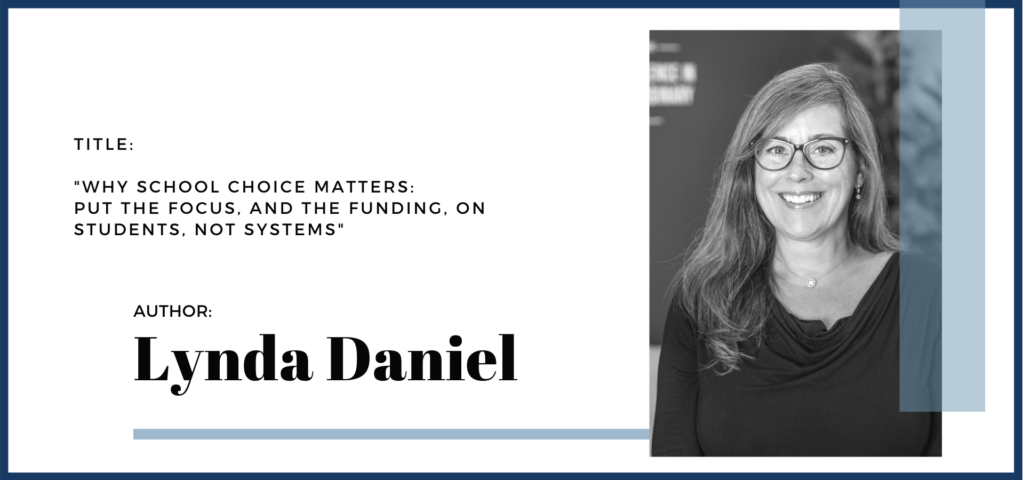Why School Choice Matters: Put the Focus, and the Funding, on Students, Not Systems
As a nation, the United States has always placed a high value and premium on education, understanding that, “It is universally admitted that a well-instructed people alone can be permanently a free people” (James Madison), “The qualifications for self-government in society are not innate. They are the result of habit and long training (Thomas Jefferson),” and, “Religion, morality and knowledge, being necessary to good government and the happiness of mankind, schools and the means of education shall forever be encouraged” (Northwest Ordinance).
However, the Founders never intended for schools to be managed by what was to be a limited and constrained government, and would be shocked at the maze of federal, state, and local bureaucracies and special interest groups which control government-run schools. The government education system developed into one in which taxpayer dollars go to a building, not to a student, creating a virtual monopoly in education providers, with only those wealthy enough to pay for private school tuition, or live in the right zip code, or devote full time efforts to home schooling, being able to exercise choice int their child’s education. This lack of diversity has resulted in a one-size-fits-all, mass-production approach to something that should be highly personal and individualized, elevating and ennobling: training each child to become a good person and good citizen by careful, competent instruction.
The school choice movement seeks to connect those funds to each student, allowing their parents, the people who know and care about them most, to choose an option that best meets their needs. This student-focused approach most closely aligns with the ideal of public education the Founders intended.
Education was meant to be a family-focused, local endeavor, and most Americans are not aware that there was not even a federal Department of Education before 1979. Since that time, spending has exploded as student performance (and therefore knowledge, competence, and ability to succeed in life) plummeted. The U.S. spends more money per pupil than almost every other country, but nearly two-thirds of those students cannot read proficiently, and the vast majority struggle mightily with math, to say nothing of their exposure to history, literature, and civics.
In response to this distressing and dangerous situation, the school choice movement has burgeoned as parents determine to claim their rightful power and control over the education their children receive. Parental and school choice advocate Erika Donalds says, ‘we must redefine and re-imagine the entire concept of “public education.” Publicly funded education is not a headquarters building. It is not school boards or school superintendents or administrators or teachers(‘) unions. Instead, publicly funded education should be viewed as an ideal, one that says we must provide every child with the capacity to succeed in life. How that is accomplished should not matter. Only the desired outcome.’
As www.edchoice.org explains, ‘School choice allows public education funds to follow students to the schools or services that best fit their needs—whether that’s to a public school, private school, charter school, home school or any other learning environment parents choose for their kids.’ Reason Foundation’s Director of School Choice and Cato Institute scholar Corey DeAngelis elaborates in a recent interview with El American, ‘School choice is funding students instead of institutions, it’s the idea that a child’s education dollars should follow them (wherever) they’re getting an education… We have so many other taxpayer-funded initiatives that already work this way. If you think about higher education, we have Pell Grants and the GI Bill for veterans where the money goes to the student. The student can pick a public or community college that they want or they could also take that money to a private university of their choosing. We don’t tell students using Pell Grants that they must use that funding at a residentially assigned community college… And you can go on and on… with food stamps, for example. You don’t even have to be for or against food stamps to agree that if we are going to have that money allocated from the taxpayer to the system, it should go to a person that could have a choice in the matter,
instead of a government-run grocery store. With food stamps, you can take the money to Whole Foods, Trader Joe’s, Walmart, Safeway. The family has a choice in the matter.’
Some of the educational choices available depending on your state are: education savings accounts, school vouchers, tax credit scholarships, individual tax credits and deductions, charter schools, magnet schools, inter/intra-district public school choice, homeschooling, hybrid homeschooling, online learning, personalized learning & learning pods, micro-schooling, contemporary government schools, and private schools.
And the choice should be yours.

